Testing Procedures
Older Children And Adults
Adult testing techniques are used when children or adults are asked to choose a cap that is closest in colour to the previously chosen cap. This is surprisingly easy for children. Generally, even five-year-old children with normal colour vision are able to arrange the whole test quickly and with no hesitation (Figure 4A). A child or an adult person may train the test situation with the colour vision GAME. During the games the colour confusion areas will be noticed. The degree of deficiency must be then investigated using the Panel 16 test.
Note that the crossing from cap #7 to cap #15 is accepted as normal because of the relatively large difference between caps #7 and #8.

Figure 4A. Normal finding. The person has sorted the caps from "pilot" to #7 correctly, found the cap #15 to be closest to cap #7 in colour and then sorted the rest of the caps correctly.
Children and some adults with colour vision deficiencies are more difficult to test because the abnormal arrangement could be due to misunderstanding how to do the task. When a normally sighted child has problems in naming colours and repeatedly shows "confusion areas" in the same axis, (deutan or protan), the diagnosis of inherited colour vision defect can be made, even in children as young as five to six years of age. If the child seems to be hesitant in arranging the caps, the technique described for testing young children can be used at any deficiencies age, including adults.
Colour vision should be known at school as early as possible so that the child is not misunderstood. In the early teens colour vision tests are needed for advice in career planning (Figures 4B and 4C).

Figure 4B. Three crossings across the colour circle. The person sorted the caps to the following order:"pilot", 1-15-2-3-14, then the rest correctly. The confusions are between the blue end and the purple end of the colour circle.
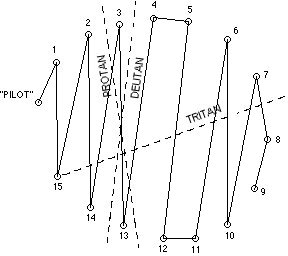
Figure 4C. Severe deutan defect is noticeable in this recording. The order of caps is:"pilot", 1-15-2-14-3-13-4-5-12-11-6-10-7-8-9.
Young Children
Children who do not understand the task of hue arrangement can be tested in a play situation.
-
Every third cap of the test (Figure 5) is placed on the table (Caps "pilot," 3, 6, 9, 12, and 15 = Set A in Figure 5C). The child is given the same numbered caps from the matching second set, Set B, one at a time and asked to find the cap that matches the cap in his/her hand from Set A on the table. Usually there is an obvious difference in the behaviour of a child with normal colour vision and one with a colour vision defect. The former finds the matching colour with no delay, the latter keeps choosing between different colours. The caps should preferably not be in the order of a normal circle but randomly placed on the table.
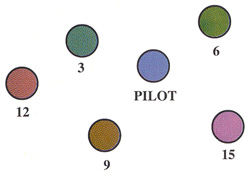

Figure 5A. Caps are randomly arranged in front of the child. Caps are: 3, 6, 9, 12, 15 and the "pilot."
Figure 5B. The child's task is to match colours by moving caps of the other set, one by one, here it is #9.


Figure 5C. Comparisons made by the child. Figure 5D. The findings are marked on the recording sheet. -
When the child is accustomed to playing with colours, the number of caps on the table is increased to cover two-thirds of the total caps (Pilot, 1, 3, 4, 6, 7, 9, 10, 12, 13, and 15). The game can be played as before (i.e., the child tries to match the colours). The confusions are revealed as in the previous situation.
-
Make the test situation more difficult by using only one set of caps. Place one-third of the caps aside (2, 5, 8, 11, and 14) and the remaining two-thirds of the caps in random order, in front of the child (Figure 6A). Give the child one of the five caps that were set aside and ask the child to select among the caps on the table, the two caps that are closest in colour to the one he or she has. When the comparison is made, return the selected caps among the others in front of the child. Move the caps to keep their order random. The matched cap is set aside and the next cap is given to the child. A child may use a cap more than once (See Figure 6B and 6C for recording information).

Figure 6A. Caps are randomly arranged in front of the child.
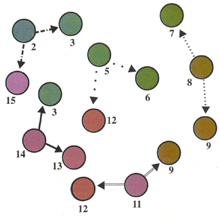
Figure 6B. The child has matched #2 with #3 and #15; #5 with #6 and #12; #8 with #7 and #9; #11 with #9 and #12; and #14 with #3 and #13.
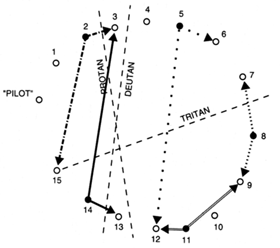
Figure 6C. The findings are recorded on the recording sheet.
By not arranging the whole circle at once in this play situation, colour confusions are found as short sequences of the circle. By varying the thirds of the caps on the table, the axis confusions can be easily found. When tested with the large stimulus, the degree of the defect may be different from the results of testing with a small stimulus2,3.
Testing can also be made easier by using the following technique:
Show the person that 'I would arrange these colours in this order' and place the caps one after the other in the correct order. Then say ' this was my way of arranging, lets sort the caps together'. Place the Pilot cap at the left edge of the test area and say ' this is always the first cap'. Then take it and move it above the other caps that are mixed on the table and ask 'which one of these caps has nearly the same colour?'. When the child chooses one - correct or incorrect - place the Pilot on its place and use the chosen cap the same way as the Pilot cap to find the next cap. Go on like this until all caps are sorted. If one or two caps are left over, tell the child 'these we forgot to sort, where would you place them?'. When the child/person does not need to concentrate on the motor functions, sorting the colours becomes easier.
| Video 1 | Video 2 |
 |
 |
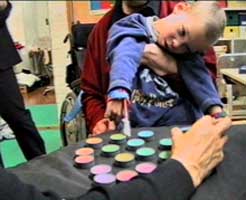
Figure 7.
The test can be performed as described above. If the child is using a stick to point, cover the end of the stick with soft cloth. Young child's finger can be covered with tube gauge.
[ Instructions I Paediatric Vision Tests I Vision Tests ]
This document was last modified on